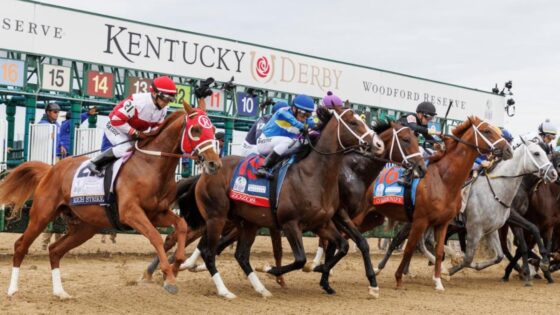The Kentucky Derby isn’t just a race—it’s the race. With just 20 slots open, getting a horse into Churchill Downs feels like winning the lottery. But for trainers? It’s no luck game. It’s strategy, sweat, and serious rule-following.
From breaking in colts to planning the perfect prep season, trainers have to walk a tightrope of requirements. And in 2025, the stakes are higher than ever. So what does it actually take to qualify? We’re breaking down every rule that matters.
Let’s ride down the road to the Derby—step by step.
From barn to gate—what it takes to qualify for the Kentucky Derby
First off, eligibility is non-negotiable: only three-year-old Thoroughbreds can run in the Derby. That means every horse has exactly one shot in their lifetime. No second chances, no do-overs.
To even get considered, these colts must be precocious enough to start training or racing at two, just like Justify did before winning it all in 2018. Without that early foundation? The Derby dream dies before it starts. Once a horse turns three, it has to show progress and maturity—not just talent. Some late bloomers peak early and flame out, but the true Derby contenders grow stronger with every race.
The real proving ground? The Road to the Kentucky Derby, a grueling point-based qualification series with 35 races across seven states and two international routes. Horses earn points by placing in specific prep races—top five finishers get a cut. The 20 horses with the most points make the Derby gate.
As races ramp up in difficulty, the point scale skyrockets. A win in a 100-point race virtually locks in a Derby slot. But even a runner-up finish in one of those high-value races could be enough to sneak in.
But what does it look like behind the scenes for trainers trying to make that magic happen?
The trainer’s playbook—every rule they must follow
Derby trainers aren’t just guiding horses—they’re playing chess with biology, timing, and competition. Step one? Start young. Trainers must build a foundation at two, ensuring their horse is fit, mentally ready, and working consistently before official races begin.
Then comes strategic racing. Trainers must select prep races that match their horse’s style, gradually increasing difficulty. And with only a few chances to earn points, every race must be perfectly timed—win or go home.
But it’s not just speed—it’s about stamina. Horses must be able to run fast over long distances, like 1¼ miles. That means training for both aerobic endurance and finishing power—often using bloodlines and data to estimate potential.
Even with talent and points, health can ruin everything. One injury, one missed workout, one fever—gone. Trainers must maintain impeccable care to avoid any setbacks leading up to May.
And don’t forget the global wildcard factor. The Japan and European Roads allow international trainers one invite each—adding a layer of international intrigue (and pressure) for those outside North America.
But making it to the gate isn’t the finish line—it’s just the beginning.
The final countdown—why only the sharpest survive Derby week
Even after qualifying, trainers must deal with last-minute scratches, media pressure, and random vet checks. The days before Derby Day are filled with mind games, perfect gallops, and night checks.
One cold or twisted ankle? It’s over. That’s why most trainers plan a three-week buffer between the final qualifying race and Derby Day—to reset, recover, and keep their horse fresh.
Meanwhile, trainers coordinate with jockeys, plan strategy based on post position, and brace for the madness of Derby Week. The best-prepped horse often isn’t the flashiest—it’s the one that’s healthiest and best-managed when the gates fly open.
The Kentucky Derby isn’t just about crossing the finish line—it’s about surviving the gauntlet to get there. From juvenile races to point chases, and from strict breed rules to razor-thin health margins, trainers play the long game. And in 2025, the rules are the same: only the most prepared, most strategic, and most disciplined teams will earn a shot at immortality in the Run for the Roses.
The post Every Rule That Horse Riding Trainers Have to Follow to Qualify for Kentucky Derby 2025 appeared first on EssentiallySports.
